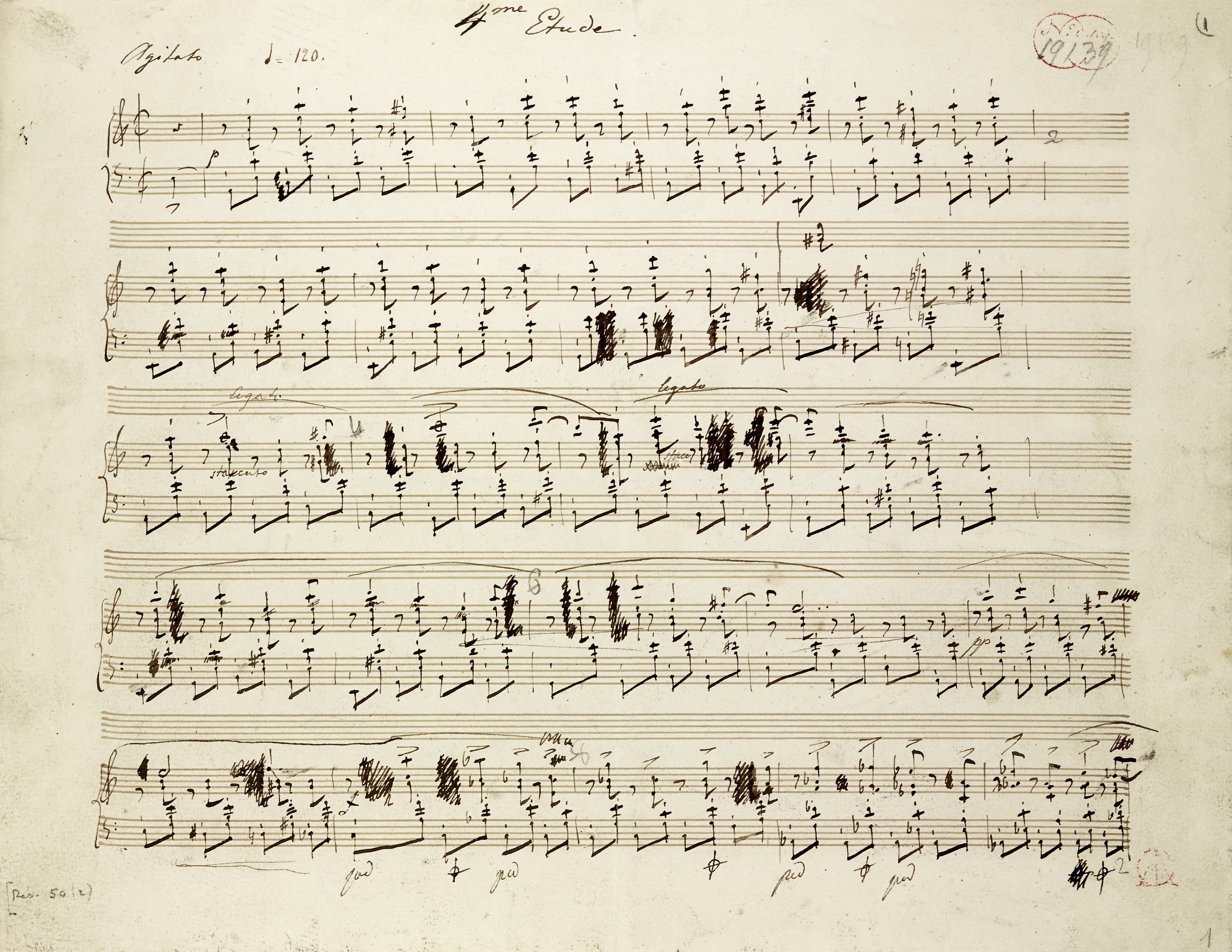



It is unclear how the difference in the metronome tempo value was created. Both 120 in A and 160 in FC are written with Chopin's hand, hence their "material" authenticity is beyond any doubt. In turn, the lost manuscript, serving as base text to EE, was probably a copy of A, so Chopin either added 160 also there or he even corrected the copied 120 to 160. Therefore, it seems that after having written A Chopin changed the concept and wrote faster tempo in the two remaining manuscripts.
According to us, there is still another possibility, resulting not from the analysis of the sources, but from the reflection on the expressive atmosphere of the music and piano grip, determining the etude character of the piece. From the piano performance point of view, the Etude's goal is to develop a flexible wrist, enabling natural and precise performance of the majority of fast leaps in the L.H. Only performing the Etude in the faster out of the indicated tempos guarantees achieving the agility at a professional level, which Chopin was aware of. If we add to it the Agitato indication, which also seems to be more natural in a faster tempo, we will reach a conclusion that the 120 tempo is inaccurate for this Etude. How to explain the fact of indicating an inaccurate tempo by the composer in his own piece? Chopin could have erroneously written (repeated) in A the tempo of the previous Etude in F major, No. 3, as most probably, he would add and complete the majority of metronome tempos in the last stage of works, having in front of him manuscripts of all Etudes. It is clear in the case of indications added in pencil (11 out of 13 preserved manuscripts), yet the remaining ones, written in ink, could have been added to the already finished manuscripts, which is proved by a high number of other ink additions in the preserved copies (e.g., the pedalling of this and the previous Etude).
Compare the passage in the sources »
category imprint: Differences between sources
issues: Errors of A, Metronome tempos
notation: Verbal indications



